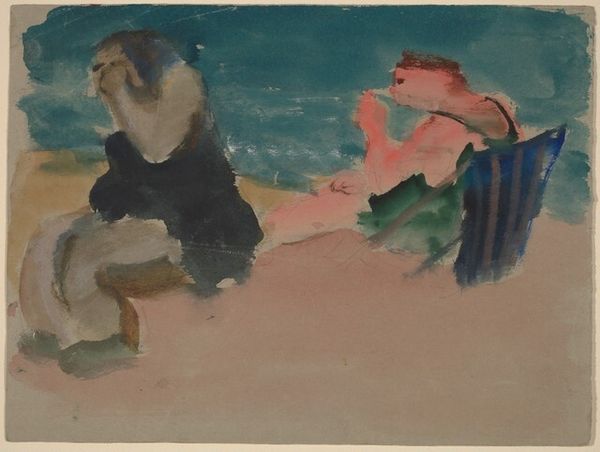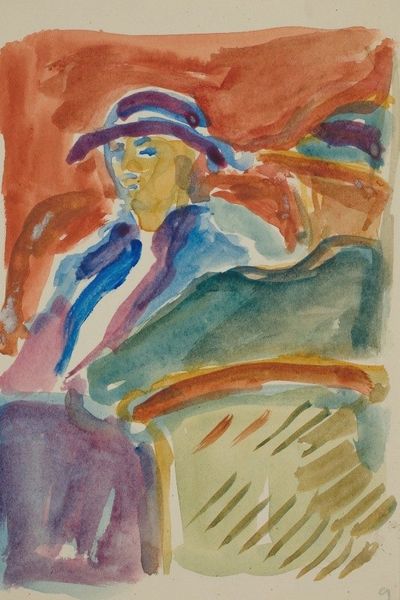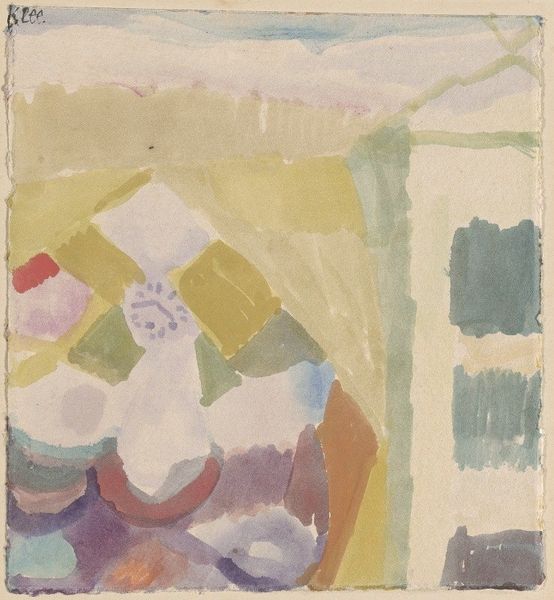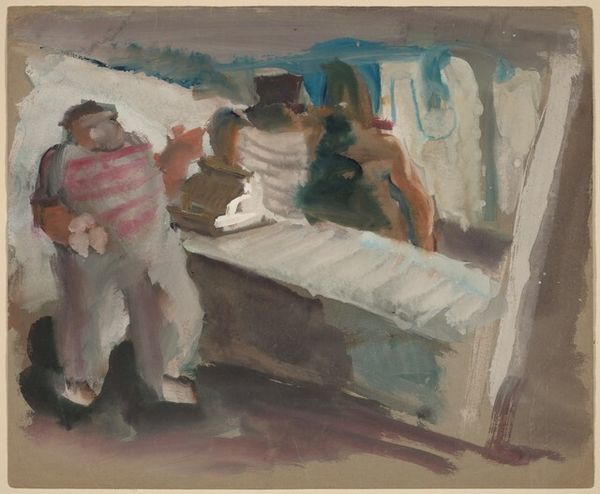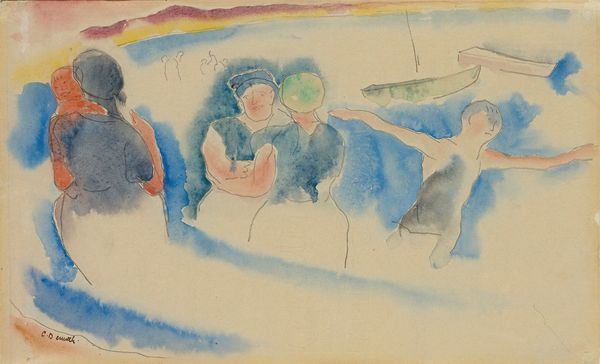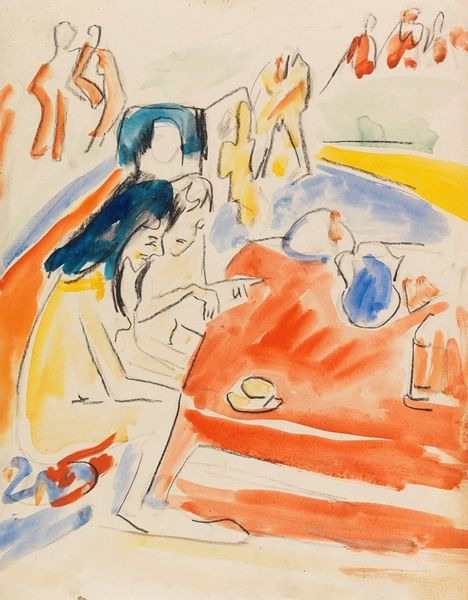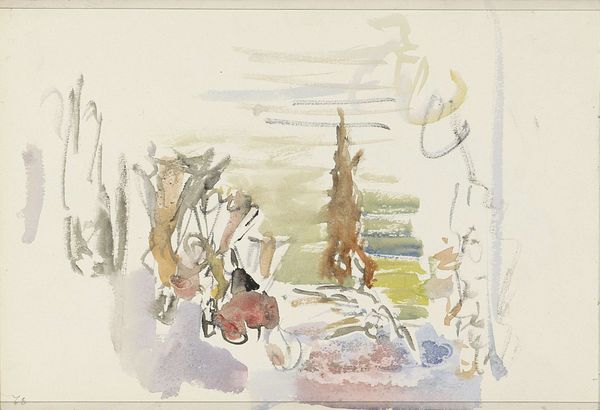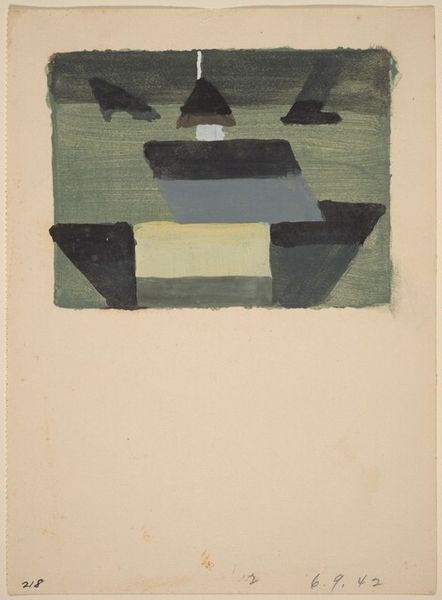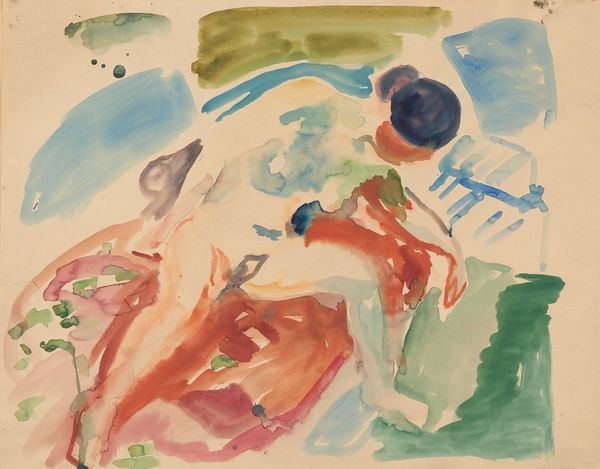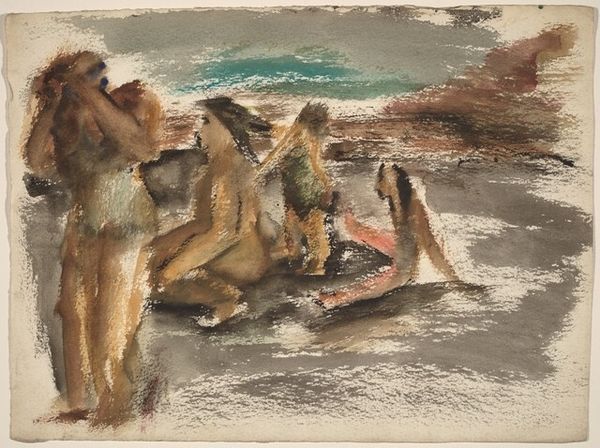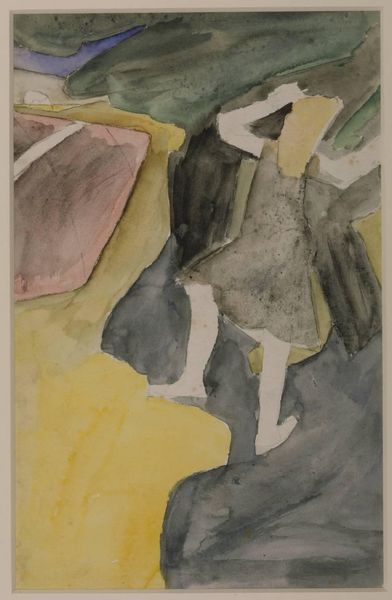![Woman Seated on a Red Sofa [recto] by Mark Rothko](/_next/image?url=https%3A%2F%2Fd2w8kbdekdi1gv.cloudfront.net%2FeyJidWNrZXQiOiAiYXJ0ZXJhLWltYWdlcy1idWNrZXQiLCAia2V5IjogImFydHdvcmtzLzZkN2FmNTA1LTUwNjctNDRjZS1iNzA2LWFkY2FmYjQwZjU5NC82ZDdhZjUwNS01MDY3LTQ0Y2UtYjcwNi1hZGNhZmI0MGY1OTRfZnVsbC5qcGciLCAiZWRpdHMiOiB7InJlc2l6ZSI6IHsid2lkdGgiOiAxOTIwLCAiaGVpZ2h0IjogMTkyMCwgImZpdCI6ICJpbnNpZGUifX19&w=1920&q=75)
drawing, watercolor
#
portrait
#
drawing
#
water colours
#
figuration
#
watercolor
#
intimism
#
modernism
#
watercolor
Dimensions: overall: 39.1 x 56.8 cm (15 3/8 x 22 3/8 in.)
Copyright: National Gallery of Art: CC0 1.0
Curator: It has such a serene, almost dreamlike quality. Editor: We’re looking at Mark Rothko’s “Woman Seated on a Red Sofa,” circa 1930, a watercolor drawing. The loose brushstrokes and translucent washes immediately convey a sense of intimacy. Curator: Yes, there's a softness in the light and a candid feel. What stands out is the materiality. Look at the paper itself. It's worn at the edges, almost fragile, grounding this domestic scene in its physical reality. How does Rothko’s choice of watercolor impact our understanding of the scene? Editor: Watercolor, with its fluidity, enhances the emotional resonance of this scene. Notice the way the red of the sofa bleeds slightly into the surrounding space? The image seems to breathe. It contributes to a mood of gentle reverie. The sofa, traditionally a symbol of comfort and domesticity, feels less solid, almost symbolic. Curator: And the sofa itself... It’s hardly photorealistic! Rothko deconstructs traditional representation. We see a deliberate crudeness, even, which is interesting given the skill needed for watercolours. Was Rothko thinking about artistic labor when making this piece? The swift strokes also highlight a certain immediacy, doesn’t it, almost rejecting notions of long term craftsmanship? Editor: Absolutely. While the immediacy you mention speaks to modern life, consider how the colour palette—soft blues, greens, and the dominant red— evokes both calmness and an underlying passion. The woman’s pose, slightly reclined, also contributes; it’s neither confrontational nor submissive, but rather introspective, suggesting interiority, a deeper psychological space. What could the color red in that couch mean, what sort of symbolism would you assign it? Curator: Intriguing idea, this push and pull. But is that reading overly romantic, seeing intentional symbolic color usage? Maybe Rothko’s choices reflect material accessibility— perhaps it was simply the red watercolor pigment available? This piece could point to his socio-economic circumstances early in his career, not grand symbolism at all. Editor: Perhaps we both see aspects of the truth here. The raw, handmade quality combined with symbolic color play. It speaks to both circumstance and emotional depth, really. Curator: Ultimately it challenges notions of art historical canon, opening itself up to those material and social questions. It’s been good looking at this again, reframing it this way. Editor: A lovely and thought-provoking dive into one of Rothko’s lesser known works, illuminating a lot of how the social and the symbolic intersect.
Comments
No comments
Be the first to comment and join the conversation on the ultimate creative platform.

